Last Updated: 28/05/2025
Common Bird Feather Diseases
Learn how to identify common bird diseases and understand the possible treatments
Author: Dr Emilee Lay BVSc BSc (Vet) Hons
Reading Time: 36 minutes - long read
Birds make amazing pets, and part of their appeal (asides from their fabulous personalities and quirks) is their beautiful feathered plumage. It can be quite distressing when your bird starts to lose their feathers and it can be due to anything from a regular moult, underlying pain, infectious, parasitic, or viral diseases, and even behavioral problems.
More often than not owners jump to the conclusion that their bird may have parasites OR are plucking from stress, but it is important to have a thorough physical examination and workup by your vet prior to trialing at home treatments. Delays in getting an appropriate diagnosis and treatment plan can sometimes lead to long-term feather loss or even death. Read on to learn about the more common causes of feather loss in Birds!
The Ins and Outs of Bird Feathers
Like our nails, bird feathers are comprised of keratin. However they arenât there just to look pretty, they provide insulation against the weather, assist in flight, communication, and camouflage. Outside these roles, birds use them for nesting and courtship!
Feathers consist of a long shaft in the center known as the rachis. The rachis supports broad flat vanes (i.e. the part we commonly associate with feathers). The bottom of the rachis is called the calamus, which helps anchor the feathers into the skin. Vanes comprise of barbs that are tightly interlocked to form a flat but flexible structure. There are also different types of feathers for e.g. contour feathers cover the body, flight feathers cover the wings and tail, and down feathers which are found beneath contour feathers.
Each feather has a different role. Flight feathers consist of primary and secondary feathers. The primary feathers on the wing help to provide thrust and power when flying. Secondary feathers help to provide lift and assist in steering and safe landing. On the other hand, down feathers - help to provide insulation whilst contour feathers provide protection from the elements.
Regular Moulting
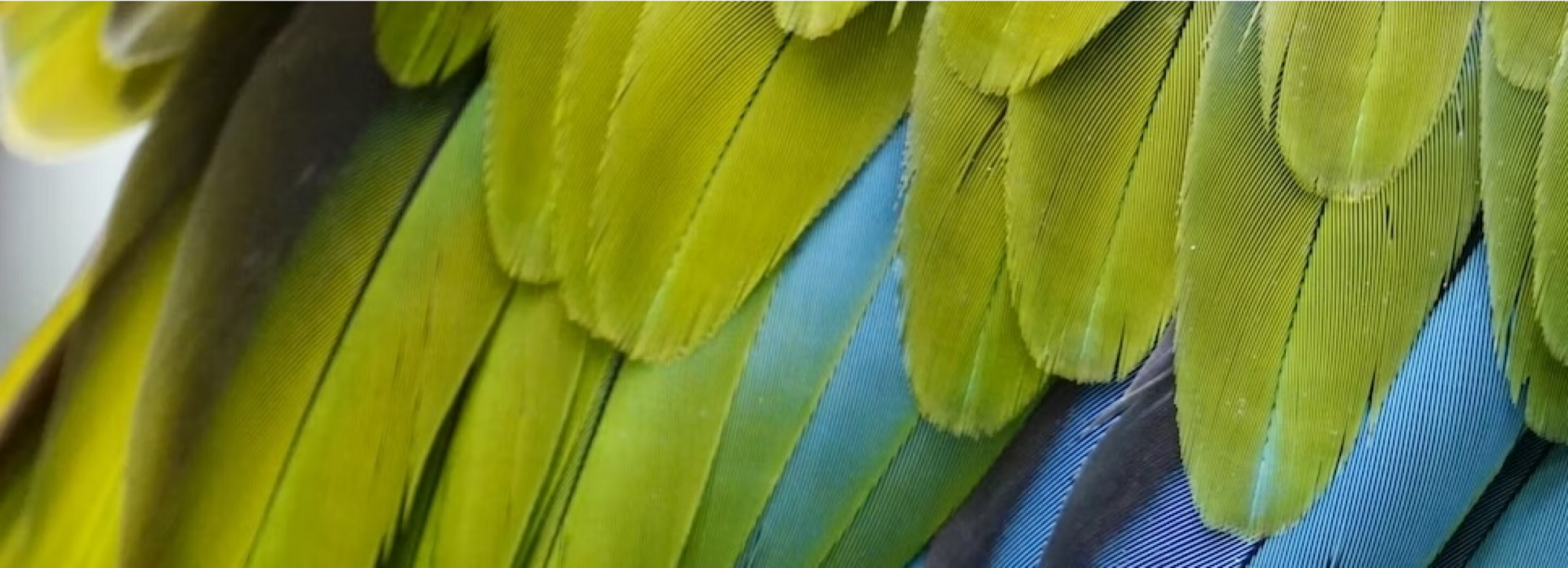
Did you know birds undergo a moult to replace their old feathers with new feathers? As these new feathers grow through they can appear as tiny waxy pins aka pin feathers. Larger feathers associated with the wings and tails may also have a large blood supply to the shaft during the growth period - these feathers are known as blood feathers - once fully mature the blood supplies reduces.
Itâs important to recognize that a normal moult doesnât result in large bald spots, as it is a gradual process. Birds will moult once to twice a year (but this can differ between species) and can take up to 4-6 weeks. Late Spring and Early summer are when birds are most likely to moult - coinciding with the end of breed season. Moulting can take up a lot of energy and trigger hormonal changes, making birds a bit more susceptible to disease during this process. Ensure that your bird is on a balanced diet so that they can cope with this process.
If you notice discolored feathers or excessive pin feathers a vet check is definitely in order.
Trauma
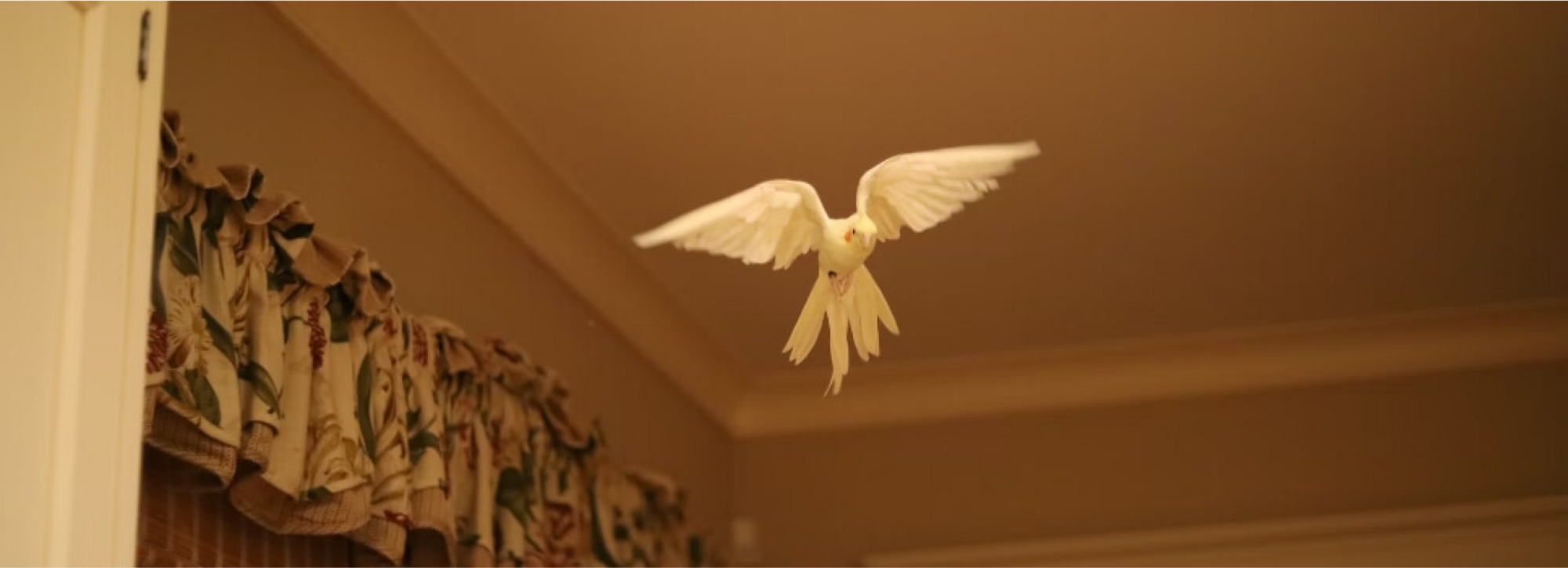
This is actually a common cause of feather loss and includes inappropriate wing trims that lead to crash landings, being attacked by other birds in the aviary, and free range indoor birds flying into walls, doors, and even boiling pots of water! Many of these problems can easily be avoided.
When it comes to wing trims, if they are to be performed - it should be done after careful consideration and discussion with your local avian vet. Wing trims should not be done at home, and should only be attempted after being trained and supervised by a vet. Remember that a wing clip is not a guarantee that your bird wonât escape or injure themselves nor is it to stop them from flying at all.
When done inappropriately it can lead to phobias, feather plucking, blood loss, bone fractures, and the inability to escape predators. Birds should be allowed to learn how to fly so that they know how to safely land, perch, and dismount. Wing clips should always be symmetrical, with growing feathers such as blood feathers left intact. The secondaries of a wing should never be clipped.
Feather Cysts
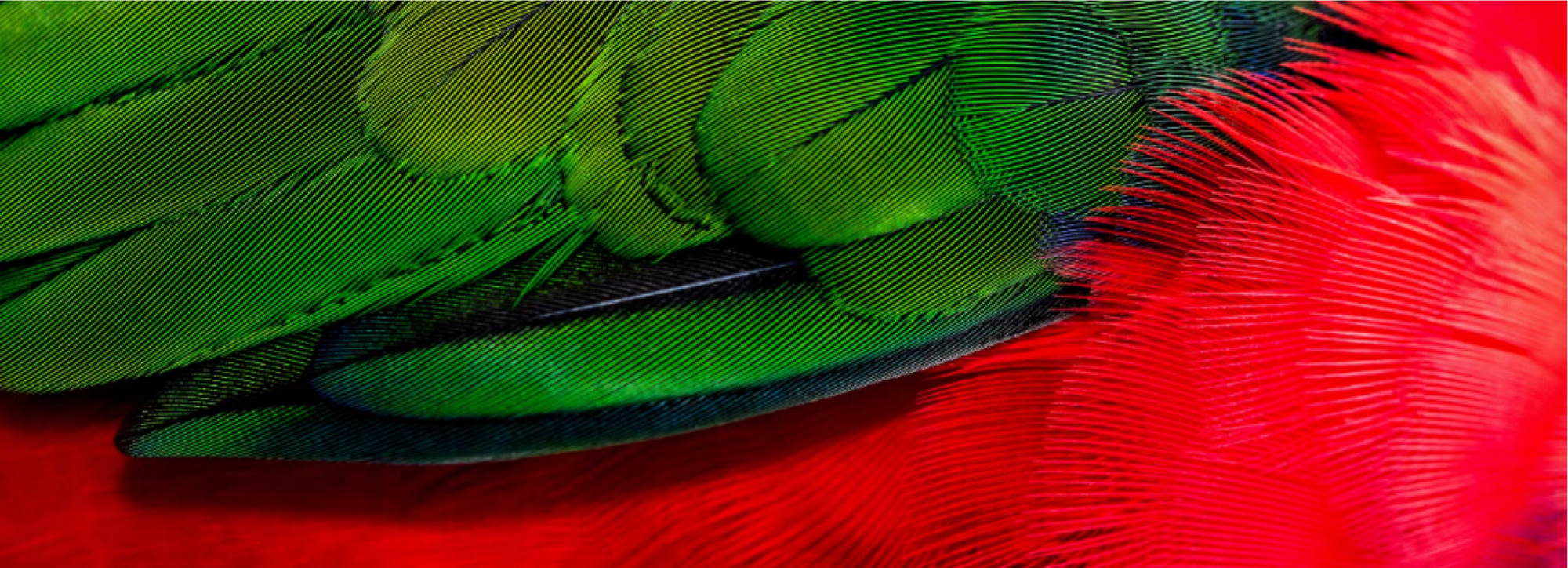
Like humans, birds can also get the equivalent of an ingrown hair aka a feather cyst. These cysts are a result of growing feathers that are unable to protrude through the skin and start to curl within the feather follicle - forming a large mass that grows as the feather enlarges. They generally occur along the primary feathers of the wings.
Parasites
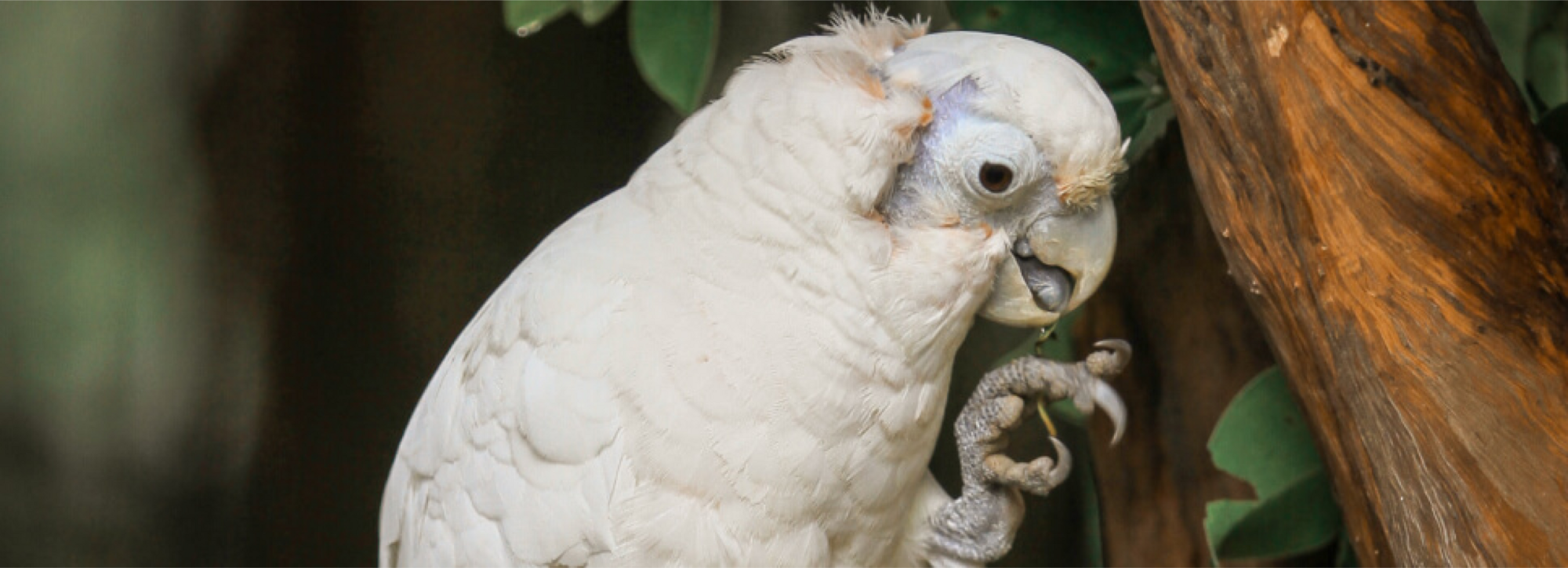
Mites are a common skin disease in birds which can result in feather loss, and thickening and flaking of the skin. Common skin mites are known as Knemidocoptes spp. Or Scaley mite, are seen mostly in Budgies and causes crusting around the feet, legs, nostrils, and head. These can be treated using Ivermectin-based products. In severe cases, secondary infections may require antibiotics. Thorough disinfection of the environment and repeat treatment of all affected and exposed birds is a must.
On the other hand, feather mites are rather uncommon in pet birds, unless they have a heavy burden or impaired immune system. The same holds true for other parasites that cause feather loss in birds such as Lice.
Bacterial and Viral Infections
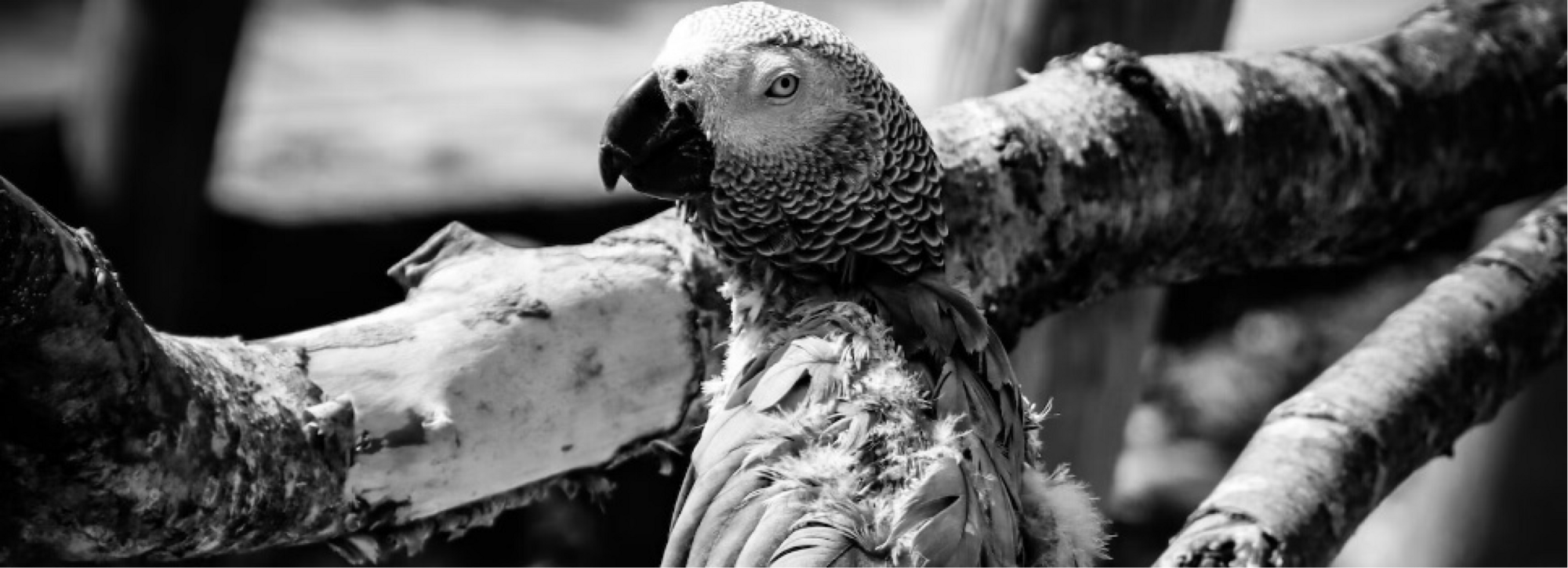
Inflammation and infection of the feather follicles secondary to bacteria are another common cause of feather loss in birds. Often the intense itching can lead to self-trauma and thus feather loss, with redness, crusting, and discharge from the follicles.
One of the most common causes of feather loss in birds is Psittacine Beak and Feather Disease - a type of circovirus. This is a virus that can affect birds from a very young age and is spread through faeces and feather dust shed by affected birds. It disrupts keratin formation - a necessary ingredient in beak and feather forming.
In acute cases it can cause death, for more chronically affected birds, it often results in abnormally formed, stunted, discolored, or missing feathers, and in some birds like Cockatoos, deformed or misshapen beaks. Diagnosis of PBFD is based on a combination of clinical signs and PCR testing. Treatment is unrewarding, and there is no definitive cure to reverse the effects of PBFD. Although birds can live a reasonably good quality of life with this disease, they are often susceptible to other infections and illnesses. Prevention involves disinfecting the environment using F10, quarantining any new birds, and testing them as necessary. Common carriers include lorikeets, budgies, and lovebirds.
Another virus that can cause abnormal skin and feather loss, especially in budgies is Polyomavirus. It is spread through exposure to bodily fluids and dander from affected birds. In the acute form, it generally presents with vomiting, regurgitation, and blood loss, in chronic forms, it can cause feather discoloration and feather deformities similar to PBFD. In budgies, Polyomavirus can affect the primary and secondary wing or tail feathers - which fail to form or develop properly. Diagnosis can only be made via PCR (Polymerase Chain Reaction) testing. Treatment is limited, mainly being aimed at managing any secondary infections, birds that do recover may become carriers of the virus.
Nutritional Disorders
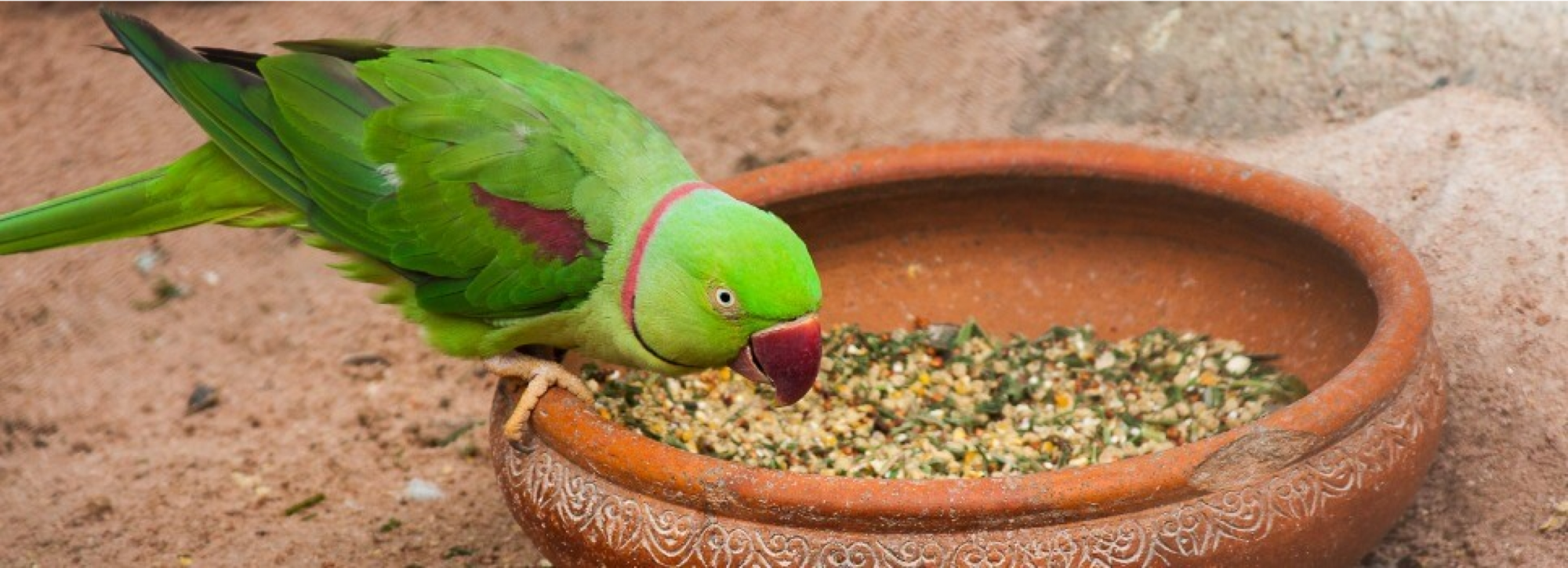
Inappropriate diets such as all-seed diets lack essential vitamins and minerals and are high in fat. This can lead to liver disorders and in turn, affect keratin and the colouration of feathers. Often birds with severe fatty liver disease may start to develop abnormally coloured feathers - often with a yellow shade to them. Ensure you are feeding the right food for your bird by reading our guides:
Behavioural Feather Plucking
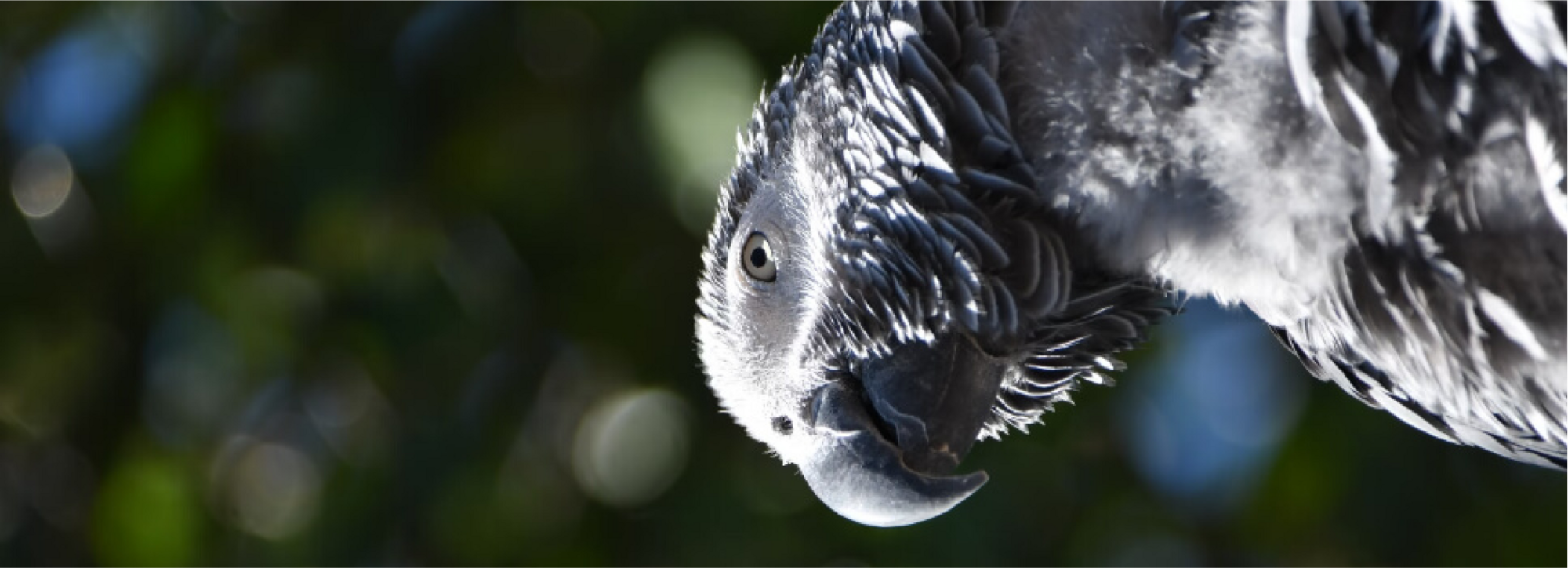
There are often multiple factors contributing to feather plucking. Many owners suspect behavioral causes but before diagnosing a bird with behavioural causes of feather plucking it's important to rule out any underlying medical issues. Aside from the more common diseases mentioned above allergies, metabolic or nutritional disorders, and even heavy metal poisoning can result in feather plucking. This is why it is imperative to have your bird seen by an experienced Avian Vet to diagnose and treat these issues appropriately. A thorough history, assessment of your bird's diet and environment and blood tests or imaging tests may be performed to determine the cause.
It's important to rule out normal behavior as well such as preening (grooming) or moulting. Birds are often unable to pluck their head - and this can be a telltale sign of plucking at home. Psychological causes of feather plucking include boredom, stress from overcrowding or environmental changes, poor wing clips, and even sexual frustration. When it comes to behavioural causes of plucking changes to the environment that can reduce stress include:
- Having set daylight hours. Overexposure to light - can stimulate breeding behaviours and also keep your bird awake - which can lead to plucking. At least 12 hours of light and 12 hours of dark, quiet time is a must.
- Provide a range of foraging toys and free time activities to help keep them occupied and enriched
- Daily baths or misting can help encourage normal preening behaviours and reduce plucking
- Do not stroke your bird on their backs as this stimulates mating behaviours and triggers behavioural plucking
- Spend time with your bird on a routine schedule where possible
In many instances even after providing the best care and environment and once all medical, social, and nutritional problems are addressed, some birds may continue to pluck - albeit to a lesser degree. Feather Plucking can be a frustrating condition to treat and manage as repetitive trauma to the feather follicles can cause permanent loss and damage to newly growing feathers.
Diagnosing and Managing Bird Feather Diseases
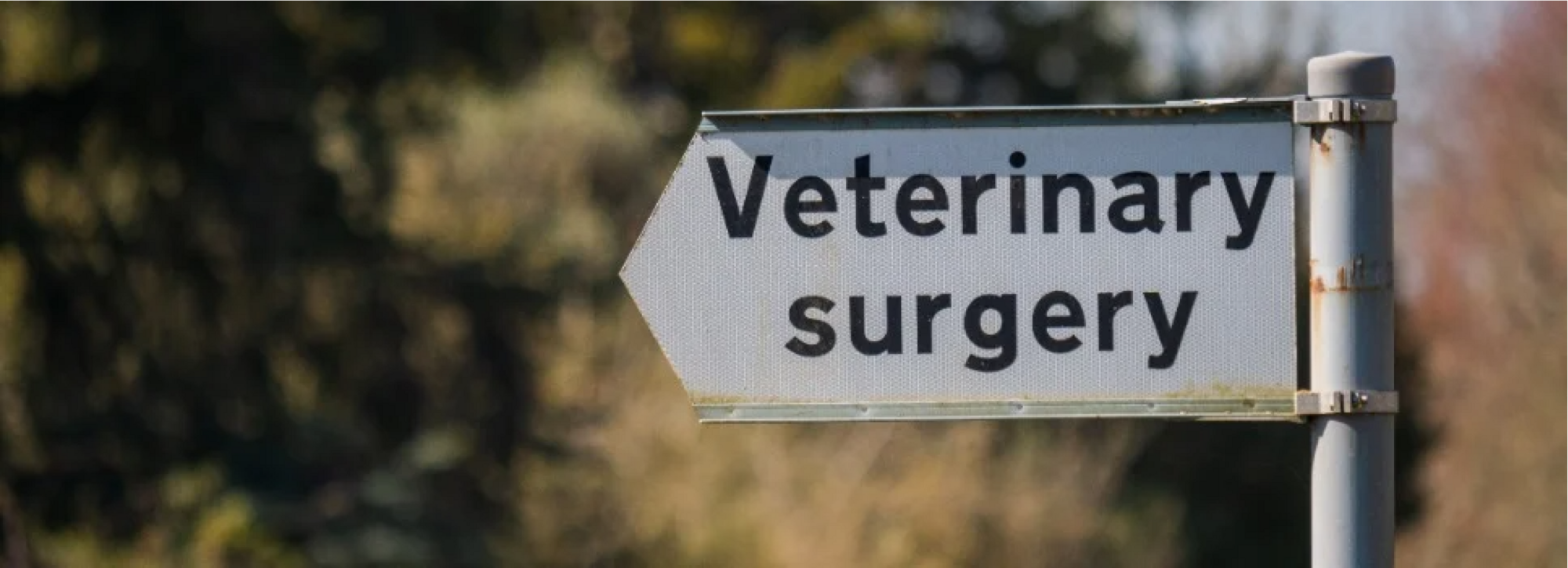
Unlike dogs and cats, birds are prey animals, and often hide signs of disease until they are extremely unwell. Regular health checks with an experienced Avian Vet is a must. As birds have specific husbandry and dietary requirements, a thorough physical examination and history is needed to direct the diagnostic and treatment plan. Special equipment and specific drugs are sometimes needed to assess and diagnose these illnesses in a routine physical exam. Diagnosis of bird feather diseases may include blood testing, swabs, faecal analysis and diagnostic imaging such as radiographs.
Once a thorough assessment has been made, management may include nutritional and environmental changes, long term medications or even behavioral modification.
If you are concerned that your bird may be unwell, book an appointment with your vet ASAP. Regular health checks with an experienced exotics veterinarian is essential for maintaining your pet's health.
Further Reading
Want to read more? Check out our other articles:
Why Your Bird Should be Eating Pellets
Want to know more? Check out our Discover Page for more tips on keeping your pets happy and healthy.
